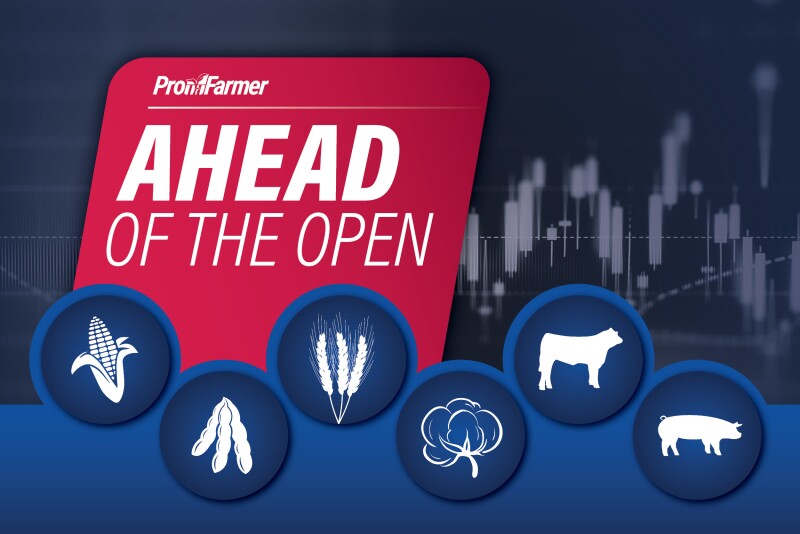GRAIN CALLS
Corn: Flat to 1 cent lower
Soybeans: 1 to 3 cents lower
Wheat: 1 to 2 cents lower
GENERAL COMMENTS:
Traders are keeping a close eye on outside markets. U.S. stock indexes on Thursday experienced their most dramatic intraday price reversals since April, with benchmark indexes falling to their lowest levels in more than two months. “Theories for the sell-off include resurfacing concern around artificial-intelligence projects, a strong delayed U.S. jobs report, and a risk-off signal sent by the drop in Bitcoin. The intraday slide wiped out an early feeling of optimism that U.S. equities would continue a rebound from a sell-off that followed the market’s last record highs near the end of October,” said a Bloomberg report. Goldman Sachs said that since 1957, there have been eight instances, including Thursday’s, in which the S&P 500 opened more than 1% higher only to reverse and close in the red. Stock-index futures were pointing to a bounce Friday morning.
A selloff in oil futures is weighing on corn and soy complex futures. U.S. and global crude benchmarks were on track for weekly declines, extending losses Friday as the Trump administration intensified efforts toward a peace deal between Russia and Ukraine. A U.S. proposal, however, calls for sweeping concessions on territory by Ukraine, leading some analysts to term it a nonstarter for negotiations, according to the Wall Street Journal.
President Trump is expanding tariff breaks for imported Brazilian food products, widening the scope of relief from import taxes amid growing U.S. consumer dissatisfaction over the cost of living. An executive order Trump signed on Thursday would exempt dozens of popular food items from a 40% levy he imposed on goods from Brazil earlier this year. Last week, the president knocked a separate 10% duty off those items, but did not originally include the higher rate, which was intended to punish the country over its prosecution of former President Jair Bolsonaro. The changes are retroactive to Nov. 13. Brazil is the world’s largest exporter of coffee and beef. Prior to the implementation of tariffs, it was the largest supplier of coffee to the U.S. Shipments of Brazilian beef to the U.S. had also been increasing before the levies, due to a cattle shortage that had affected the North American industry.
CORN: December corn saw modest follow-through selling pressure overnight, holding support at the Nov. 10 low of $4.25 ¼. Further support is seen at $4.20. Resistance stands at the 200-day moving average at $4.32 ¼.
SOYBEANS: January soybeans were also weaker overnight. Support is seen at $11.20 and then at this week’s low at $11.14 ¼. Resistance is seen at Thursday’s session high of $11.42 ¾.
WHEAT: December SRW drifted lower overnight. Support is seen at $5.17 ¼ after testing this week’s previous low at $5.24 ½. Resistance is at Thursday’s high of $5.43 ¼ and the weekly high at $5.50 ½.
LIVESTOCK CALLS
CATTLE: Lower.
HOGS: Mixed/lower.
CATTLE: Cattle futures are expected to open lower after the removal of the 40% tariff on Brazilian beef. Live cattle futures continue to trend lower and the recent announcement is likely to increase selling efforts. Cash cattle trade has averaged $218.30 so far this week and trade is likely to pick up following today’s cattle on feed report for October. Today’s COF data is expected by analysts to show the total number of U.S. cattle on feed as of November 1 at 97.9% of last year. October placements are expected to be around 92.2% of last year and October marketings at 92.5% of last year.
HOGS: Lean hog futures are expected to open mixed to lower after finding support on short covering and the lean hog futures’ discount to the cash market. But pressure remains from steadily declining cash hog prices and weakness in pork cutout values. The latest CME lean hog index was down another 40 cents at $86.27. Today’s projected cash index price is down 56 cents to $85.71. Thursday’s national direct 5-day rolling average cash hog price quote was $75.29.

